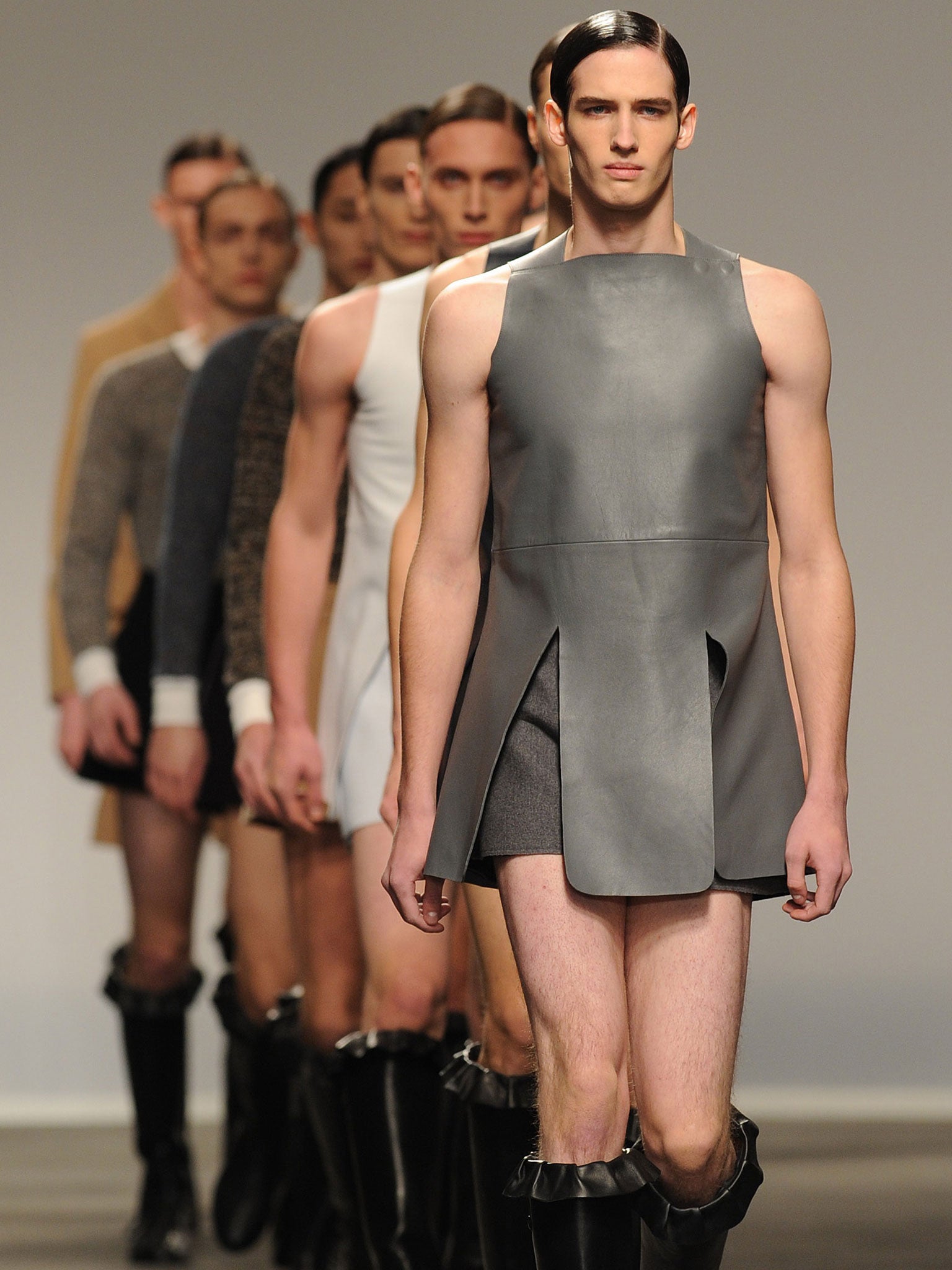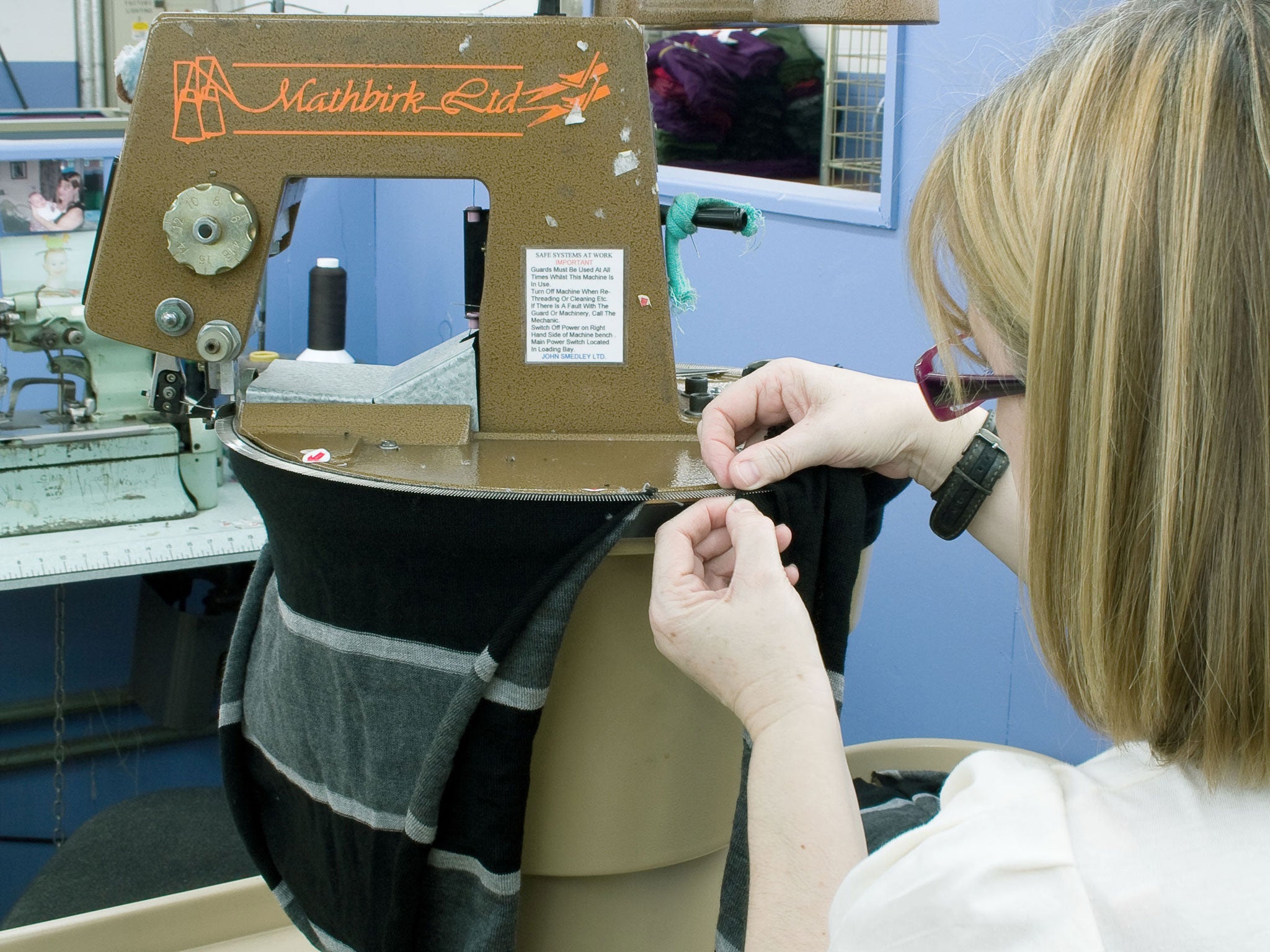A 'Made in Britain' fashion revival – for those who can afford it
While UK manufacturing can’t compete with low-cost factories in Bangladesh, it has found success by targeting the high-end export market

Your support helps us to tell the story
From reproductive rights to climate change to Big Tech, The Independent is on the ground when the story is developing. Whether it's investigating the financials of Elon Musk's pro-Trump PAC or producing our latest documentary, 'The A Word', which shines a light on the American women fighting for reproductive rights, we know how important it is to parse out the facts from the messaging.
At such a critical moment in US history, we need reporters on the ground. Your donation allows us to keep sending journalists to speak to both sides of the story.
The Independent is trusted by Americans across the entire political spectrum. And unlike many other quality news outlets, we choose not to lock Americans out of our reporting and analysis with paywalls. We believe quality journalism should be available to everyone, paid for by those who can afford it.
Your support makes all the difference.The models stomp rather than sashay down the catwalk and the cuts are more tailored than the floaty, fussy creations on the womenswear runways, but menswear fashion shows are becoming big business.
While most men in Europe recover from their festive overindulgence, a stylish crowd will emerge from the January stupor to descend on London, Florence and Milan for the world’s biggest menswear fashion shows. First up is the fifth London Collection: Men (6-8 January). That’s followed by the defining menswear tradeshow Pitti Uomo in Florence. Finally there’s Milan Men’s Fashion Week.
Big British names such as Burberry, JW Anderson and Margaret Howell are some of the highlights for buyers and commentators in the London audience. Current trends favour the Brit style but what about British-made brands?
The mass manufacturing of clothing in the UK has been in decline since the mid-1990s, and last month Jeremy Hackett, founder of the menswear brand Hackett, now owned by Pepe Jeans and a consortium of European investors, said the industry in the UK had “been decimated”. Hackett could no longer make good quality clothes here, he said.
Not everyone agrees. John Miln, chief executive of the UK Fashion and Textile Association, said: “In the UK manufacturing industry for menswear, formalwear continues to be strong. Unlike the high street where business is tough, formalwear and tailoring is holding its own. There is plenty of fabric production in the UK from locations such as Yorkshire, where there are some great suppliers, particularly of wool, operating well.”
Many well-established British brands are piling money into the UK – expanding factories and creating jobs. Drake’s London, the menswear accessories brand, recently invested in two factories to make its ties and shirts in the UK. Drake’s, which counts Daniel Craig and Jude Law as fans, bought Chard-based Rayner & Sturges – the last independent quality shirtmaker in Britain – in the summer and also recently relocated to a larger factory in Shoreditch, as part of its plan to export its brand worldwide.
Drake’s, now owned by Mark Cho, co-founder of the cult Hong Kong store The Armoury, and the menswear specialist Michael Hill, has a £7m turnover and exports to Europe, the US and Asia.
John Smedley produces from the world’s oldest working factory – manufacturing began in 1784 – and employs about 400 people across three factories in Derbyshire and Yorkshire. Ian Maclean, the brand’s managing director, is the eighth-generation family member to run the business and has big plans.
In the past three years the company has invested £500,000 in dyeing equipment, computerised design systems and a new canteen for staff. Next is a recruitment drive. The brand is searching for 19 people and will use the Government’s apprenticeship scheme to hire and train people. Mr Maclean explains: “We feel we are unlikely to find experienced people with skills such as linking, seaming and mending, so it is more likely we will recruit a significant number of apprentices.”
The group makes about 400,000 garments a year, of which 60 per cent are exported. Japan is its biggest export market, followed by Italy, Germany, France and Russia.

Making clothes in the UK does appear to be viable, but it is the expensive brands that make it so.
Maclean warns: “We can’t compete at the low end on price and wouldn’t want to, so to grow our business we need to tell strong stories about our brand, including ‘Made in Great Britain’, in order to justify and enhance the value of our product.”
Costs are higher, so the products that are made here are for the wealthy consumers. “Take wool pullovers,” says Maclean. “The mass market price is at £49 and lower – the likes of Next, Tesco and M&S source from the lowest-cost countries like Bangladesh. There are several strong brands like Gant and Ralph Lauren doing good business at a price of £85, but all of these jumpers are made abroad. Our ‘Made in the UK’ jumpers retail for £140. So I would say that it is the upper-middle and wealthy people who can afford it.”
Tony Lutwyche, a Savile Row suit-maker and former army officer, is credited as one of the most important men in British tailoring, having saved the Cheshire Bespoke factory – the manufacturing arm of brand Chester Barrie. His bespoke line is popular with stars including Gordon Ramsey and Jamie Cullen and it is the official tailor for the British Polo Team.
He says: “The companies that survived and continue to manufacture in the UK are the Rolls Royces rather than the British Leylands of this world. We can’t compete on price but we can compete on quality.”
Mr Lutwyche says it would help the industry if Europe and the UK could force manufacturers to put a country of origin on the garments. “I think it is marginally immoral when a company claims to be British when they do not make anything here,” he says.
After the struggle of the 1990s, when numerous factories closed, Lutwyche thinks the made-in-Britain label is having a resurgence.
“We have been through the worst,” he says, “and now companies and customers are seeing the benefits of the quality you can get from clothing here. There is also the renewed ethical viewpoint following issues such as the Bangladesh factory disaster.”
These brands clearly can’t compete on price but new regulations could help.
Maclean suggests that if the European Union and US governments took action to “force Western clothing brands to source more ethically”, then costs at the lower end of the market would rise.
“This [would] ultimately reduce the price differential between our garments and those made abroad, to our benefit,” he says.
As the buyers queue up to paw the goods at London Collection: Men, perhaps some will be just as interested in the manufacturing label as the designer’s label.
Join our commenting forum
Join thought-provoking conversations, follow other Independent readers and see their replies
Comments